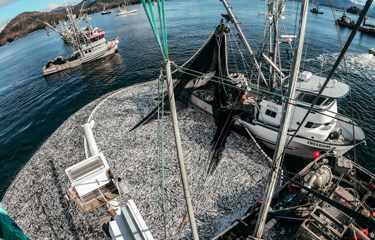The 2022 herring season in the U.S. state of Alaska has concluded successfully, according to the Alaska Department of Fish and Game.
In recent years, the fishery’s value has been estimated at around USD 5 million (EUR 4.7 million), down from the record of USD 55 million (EUR 51.3 million) in 1988, with most of the fish sold to Japan. Herring roe, or kazunoko in Japanese, is commonly eaten during Oseibo, the Japanese Christmas season.
Though the purse-seine guideline harvest level (GHL) was set at 52,000 metric tons, the harvest will likely tally up to fewer than 15,000 metric tons, according to Tim Sands, the area management biologist with the Alaska Department of Fish and Game.
“With that huge GHL and a small fleet, there’s no concern about the biology, so we just opened [the fishery],” Sands said.
This year’s exact harvest total and value will be kept confidential in order to protect the identity and business valuations of the fishery’s limited number of participants, Sands said.
The herring fishery got underway in Kodiak, Alaska, on 1 April, 2022, and the fleet achieved record-breaking harvests, with a preliminary estimate of 9,000 metric tons, up from the previous record of 5,701 metric tons set in 2010.
Sitka’s fishery ran for 15 days, from 26 March through 10 April, and closed when test fishing revealed a high percentage of spawn-outs had mixed in with ripe females.
Sitka’s sac roe fishery had participation from 28 of the 47 active permit-holders. The average roe recovery hit 11.9 percent.
The Togiak fishery, which is comprised of two processors, tenders, and eight seiners, began winding down in early May.
Reporting by Charlie Ess
Photo courtesy of Brannon Finney/National Fisherman







